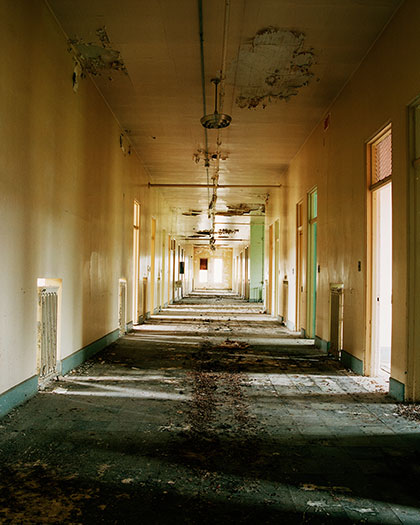Library of Dust depicts individual copper canisters, each containing the cremated remains of patient from a state-run psychiatric hospital. The patients died at the hospital between 1883 (the year the facility opened, when it was called the Oregon State Insane Asylum) and the 1970’s; their bodies have remained unclaimed by their families.
The approximately 3,500 copper canisters have a handmade quality; they are at turns burnished or dull; corrosion blooms wildly from the leaden seams and across the surfaces of many of the cans. Numbers are stamped into each lid; the lowest number is 01, and the highest is 5,118. The vestiges of paper labels with the names of the dead, the etching of the copper, and the intensely hued colors of the blooming minerals combine to individuate the canisters. These deformations sometimes evoke the celestial – the northern lights, the moons of some alien planet, or constellations in the night sky. Sublimely beautiful, yet disquieting, the enigmatic photographs in Library of Dust are meditations on issues of matter and spirit.
Among my concerns with Library of Dust are the crises of representation that derive from attempts to index or archive the evidence of trauma; the uncanny ability of objects to portray such trauma; and the revelatory possibilities inherent in images of such traumatic disturbances. While there are certainly physical and chemical explanations for the ways these canisters have transformed over time, the canisters also encourage us to consider what happens to our own bodies when we die, and to the souls that occupy them.

